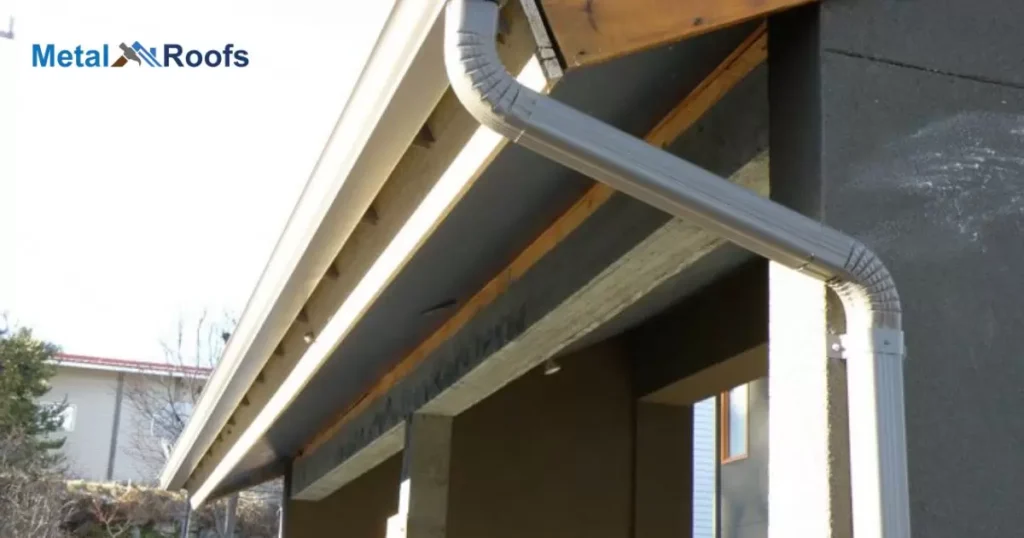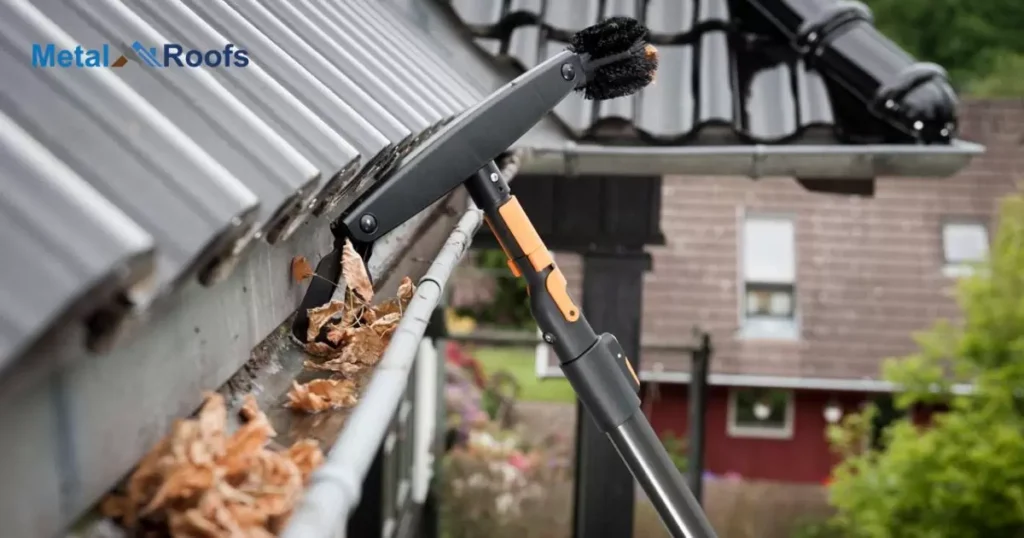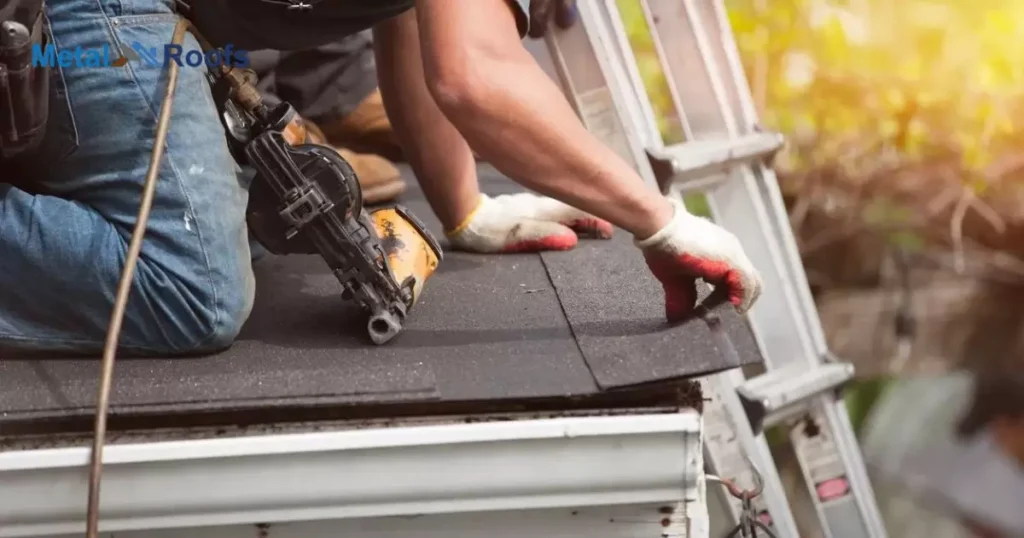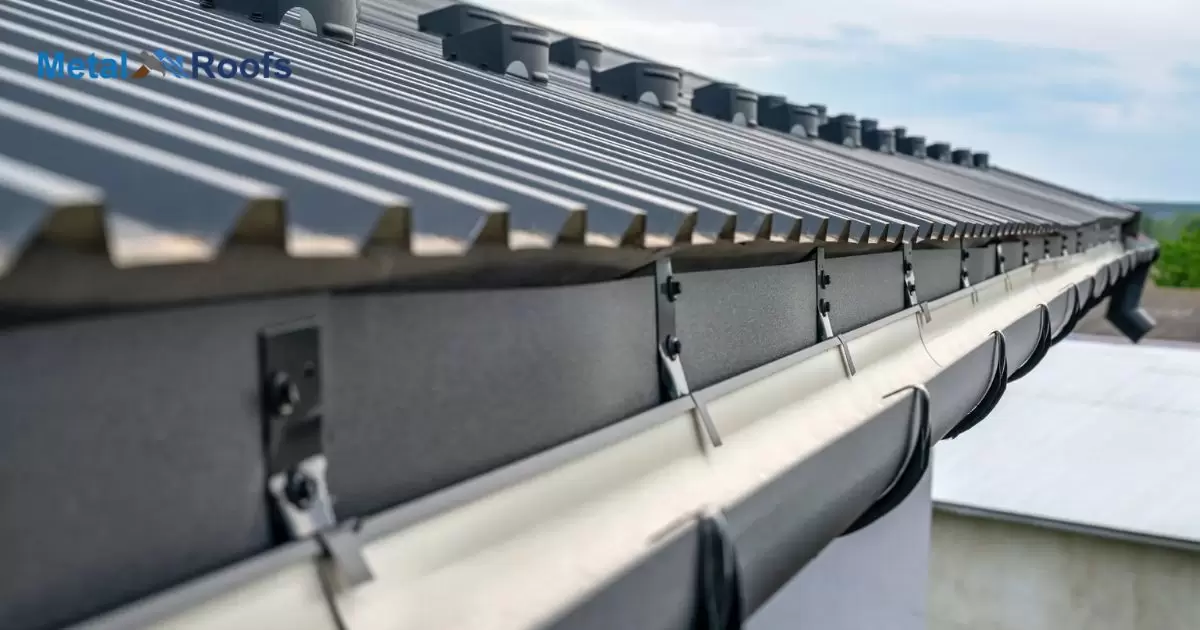A gutter apron is a piece of flashing installed where a roofline meets a gutter, to prevent water from getting behind the gutter and causing leaks or rotting; adding an apron to an existing roof requires carefully lifting or detaching the shingles so the metal can be slid underneath before reattaching.
An existing roof meets a gutter. Water leaks behind. Rot spreads. Shingles lift, apron slides under. No more leaks. No more rot. Installing a gutter apron on an existing roof transforms problem areas. Safeguards investment. Prevents damage. Simple upgrade, lasting benefits.
Rotting wood remains intact. Lifting shingles allows installing. Sliding metal flashing underneath is key. Reattaching shingles seals the gap. Diverting water away protects the roof. Lasting solution without full replacement. Simple upgrade prevents major issues.
Key Takeaways
- Installing a gutter apron on the existing roof prevents water damage and enhances drainage.
- Steps include cleaning area, measuring, cutting, positioning, securing, overlapping, sealing, and attaching gutters.
- Professional installation ensures safety and maximizes effectiveness.
- Gutter apron directs water away from the fascia, improving roof longevity.
What Is A Gutter Apron?
A gutter apron is a metal strip installed on the edge of a roof. Its purpose is to direct rainwater into the gutter, preventing it from seeping behind and causing damage. By extending slightly beyond the roof edge, it ensures water is efficiently channeled away from the structure, safeguarding it from potential harm.
How Does a Gutter Apron Work?

A gutter apron works by directing water away from the edge of your roof. It’s installed under the shingles and over the back edge of the gutter. This prevents water from seeping behind the gutter and causing damage.
When rainwater flows down the roof, the gutter apron helps guide it into the gutter system. This keeps water from dripping down the fascia board or infiltrating the roof structure. Overall, a gutter apron helps protect your home from water damage and prolongs the lifespan of your roof and gutter system.
How to Install a Gutter Apron?
Installing a gutter apron starts with cleaning the roof’s edge. Measure and cut the apron to fit. Position it with the flange down, extending beyond the roof’s edge. Nail it in place every 6 to 8 inches.
Overlap sections by 2 inches and seal them using bubble wrap insulation. Finish by applying roofing cement along the top edge. Finally, install the gutters securely, ensuring proper drainage. Clean up the area when finished.
Gutter Apron Installation Cost
| Aspect | Cost Range |
| Gutter Apron Material | $1.50 to $3.00 per linear foot |
| Labor (Professional Contractor) | $50 to $100 per hour |
| Total Cost (Average) | $225 to $450 (for 150 feet of roof edge) |
The cost of installing a gutter apron varies depending on factors like the size of your roof and the type of materials used. On average, expect to pay between $1.50 and $3.00 per linear foot for gutter apron installation. For a standard-sized home with 150 feet of roof edge, this could range from $225 to $450.
Costs may include labor fees if you hire a professional contractor, which can range from $50 to $100 per hour. Keep in mind that while installing a gutter apron can be an upfront expense, it can help protect your home from water damage and prolong the lifespan of your roof, potentially saving you money in the long run.
Gutter Apron Benefits

A gutter apron is a small, but crucial, component of a gutter system that is often installed underneath the edge of the roof where the gutter meets the fascia board. Here are some benefits of gutter aprons:
Water Diversion: One of the primary functions of a gutter apron is to help direct water away from the fascia board and into the gutter. Without a gutter apron, water can seep behind the gutter, potentially causing damage to the fascia, soffit, and even the roof deck over time.
Prevents Rot: By preventing water from infiltrating behind the gutter and onto the fascia board, a gutter apron helps to reduce the risk of rot and decay in the wooden components of the roof structure. This can prolong the lifespan of the fascia board and prevent costly repairs.
Protects Siding: A gutter apron can also help protect the siding of a building by preventing water from running down the side of the house between the gutter and the fascia board. This helps to prevent staining, rot, and other damage to the siding material.
Enhances Gutter Stability: Installing a gutter apron provides additional support for the gutter system by creating a more stable base for the gutter to attach to. This can help prevent sagging or pulling away from the fascia board, especially in areas with heavy rainfall or snow accumulation.
Improves Curb Appeal: Gutter aprons can also enhance the appearance of the gutter system and the roofline by providing a finished, professional look. They come in a variety of materials and colors to match the aesthetic of the building and can contribute to overall curb appeal.
Overall, while a gutter apron may seem like a small detail, it plays a significant role in protecting the structural integrity of a building and maintaining the effectiveness of the gutter system.
Gutter Apron Vs. Drip Edge
Gutter apron and drip edge both protect your home from water damage. Gutter apron guides water into the gutter, while the drip edge directs it away from the fascia. They work together to safeguard your roof and structure. Choosing between them depends on your roof and gutter system’s needs.
Drip Edge
Drip edge is a vital component for safeguarding the roof’s edge. It shields against water damage and directs water away from the fascia. Unlike gutter apron, its primary function is to protect the roof’s perimeter.
Gutter Apron
The gutter apron is a metal flashing that attaches to the roof’s edge. It helps direct water into the gutter, preventing it from seeping behind. Its purpose is to protect the roof structure and fascia from water damage.
Gutter Apron Flat Roof

To install a gutter apron on a flat roof, start by gathering your materials: a gutter apron, ladder, nails, hammer, and safety gear. Clean the roof edge and measure the length needed for the gutter apron.
Cut the apron to size with tin snips and position it along the roof edge, ensuring it extends slightly beyond. Nail the apron in place along the top flange, spacing nails evenly. Overlap sections if needed and seal with roofing cement. Finally, attach your gutter system securely to the apron for proper drainage.
Frequently Asked Questions
Does the gutter apron go over the gutter?
No, the gutter apron goes under the shingles and over the edge of the roof, helping direct water into the gutter.
How do you fasten a gutter apron?
You fasten a gutter apron by nailing it along the top flange, spacing nails evenly. Ensure a secure attachment for proper performance.
Which is better a drip edge or gutter apron?
A gutter apron is generally considered better as it provides additional protection by directing water away from the fascia, while a drip edge primarily prevents water from seeping under the roofing material.
Conclusion
An existing roof can be upgraded. Installing a gutter apron seals gaps. It diverts water properly. Shingles lift temporarily. Carefully sliding metal underneath prevents leaks. So unnecessary replacement is avoided. A simple addition protects an investment.
Gutter apron installation is effective. Shingling was replaced carefully afterwards. Caulk seals any remaining spots. Gutter tests don’t show any leaks. Wood rot or mold growth ends. Roof life extended at low cost. Protecting the roof protects the house.











